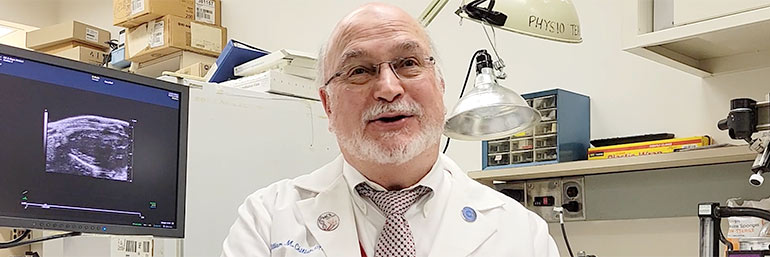Feb 14

How can you mend a broken heart?
How can you mend a broken heart? Flowers? Chocolate? Perhaps, simply saying, “I’m sorry!?”
Of course, there are times where it might cost you a little more — think diamonds, golf clubs or a new car.
But would it be worth it to spend millions to fix a broken heart? What if it could lead to fixing all broken hearts?
If the broken heart in question is the result of Takotsubo cardiomyopathy — aka Broken Heart Syndrome – the answer is a resounding yes.
In Takotsubo cardiomyopathy, two areas of the heart do not function in synchrony. “It’s also known as apical ballooning syndrome, in which one area of the heart bulges out when the other area contracts,” said William Chilian, Ph.D., FAHA, FCVS, professor and chair of Integrative Medical Sciences, and director of the Heart and Blood Vessel Disease Research Focus Area at NEOMED.
“Several years ago, it was classified as an orphan disease, meaning it’s a rare disease. But nowadays, there are roughly between 50,000 and 100,000 patients per year who are diagnosed with Takotsubo Syndrome,” Dr. Chilian said.
Why the uptick in cases?
According to Dr. Chilian, the disease has become more diagnosable. “There are definite criteria for a diagnosis and it’s a condition that now cardiologists appreciate,” he said.
Last summer, Dr. Chilian and colleagues Feng Dong, M.D., Ph.D., and Vahagn Ohanyan, M.D., Ph.D., received a $589,427 grant from the National Heart, Lung and Blood Institute of the National Institutes of Health to study the mechanisms underlying Takotsubo syndrome. The total expected award amount for the four-year project is $2.3 million.
“We got into this area literally by accident,” Dr. Chilian noted. “We had a model in which blood flow to the heart was impaired. And we thought, okay, what would happen if we chronically stressed that model? And when we did, we saw results that were completely unexpected. That led us to this avenue of research where we think that small blood vessels in the heart play an instrumental role in the disease process of Takotsubo Syndrome, also known as Broken Heart Syndrome.”


